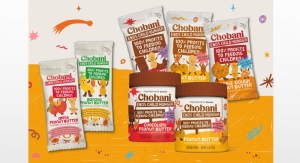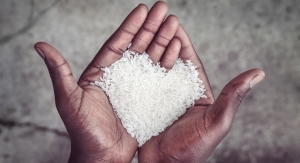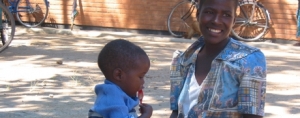Joanna Cosgrove, Online Editor11.07.11
In stark contrast to the media deluge about the global obesity epidemic, malnutrition and famine continue to devastate developing regions, with Asia/Pacific and Sub-Sahara Africa among the worst hit. According to World Hunger Education Service (WHES), there are an estimated 925 million hungry people in the world—that’s 13% of the population, or one in seven people. UNICEF statistics, which link poverty with malnutrition, found more than 30% of children in developing countries—about 600 million—live on less than $1 a day. More sobering, every 3.6 seconds one person dies of starvation and it’s usually a child under the age of five.
More than simply just being hungry, WHES defined two basic types of malnutrition: protein-energy malnutrition (PEM) and micronutrient malnutrition. While micronutrient is simply a deficiency of vitamins and minerals, PEM represents the most abundant and lethal form of malnutrition. PEM is a lack of calories and protein necessary to support important bodily functions, including the development and maintenance of muscles.
A Bar is Born
In 1976, French agricultural engineering student Michel Lescanne was so moved by the plight of the malnourished, he wrote his dissertation on the feasibility of a nutritional biscuit for populations in developing countries. Not long after, he began working in the R&D department of Nova, a dairy products company managed by his father, where he contributed to the development of Novofood, a nutritional bar.
In 1986 Mr. Lescanne founded his own company, Nutriset, with the mission of “focusing on research in the field of humanitarian nutrition, developing innovative solutions and acting as an interface between the worlds of humanitarian aid, nutritionists and food industry technologies.”
Following a 1993 meeting of Epicentre, a research and training unit of the humanitarian organization Médecins Sans Frontières (MSF), Nutriset developed a ready-to-dilute therapeutic milk that successfully treated 300 children with severe acute malnutrition in Rwanda in August 1993, and was quickly adopted by the International Committee of the Red Cross (ICRC), Concern and MSF.
“But in the camp where Rwandan refugees were grouped together, the NGO's (non-governmental organizations) were immediately confronted with the problem of safety,” explained François Vila, a spokesperson for Nutriset. “They were obliged to leave the feeding centers at the end of the day, without being able to distribute the night-time meals...when they returned on the next day, they faced the tragic toll of the ‘early morning deaths.’”
This type of setback led Mr. Lescanne and his colleague, Andre Briend, to formulate a new type of weapon to fight famine: a nutritional bar—also referred to as Ready-to-Use Therapeutic Food (RUTF). It debuted in 1996 and was dubbed “Plumpy’Nut.”
“We didn’t want to give it a scientific sounding name” recalled Isabelle Lescanne. “Also we wanted it to be in English, the language most used in the humanitarian aid sector. We wanted something snappy. A few of us sat round a table, with a dictionary, bouncing ideas around. Pump, Plump, plumpy, peanut, nut, ....Plumpy’Nut.”
Each 92 gram sachet of ready-to-eat Plumpy’Nut contains a 500 kcal paste formulated with milk powder, whey, peanuts, sugar and plant fats that deliver a complex of vitamins and minerals to address the specific needs of children suffering from severe malnutrition.
Nutriset said two to three sachets per day over the course of four to six weeks sufficiently assuages conditions of severe acute malnutrition.
Mr. Vila explained that the extreme climates of places in need of such nutritional intervention prompted Nutriset to run stability studies thermo analyses on thermo labile vitamins such as vitamin B1 in an effort to anticipate how the bars might be impacted while exposed to temperatures that could influence potency and integrity during the shipping and distribution process. The products are also formulated and packaged to be kept for up to 24 months without refrigeration.
Beyond the Bar
In the years since the creation of Plumpy’Nut, Nutriset has formulated an umbrella of complementary products to meet additional nourishment needs. Included in the range are therapeutic milks, Nutributter lipid-based nutritional supplement paste for babies aged six to 24 months; Plumpy’doz, Plumpy’soy and Plumpy’sup for children of various ages and nutritional requirements; QBmix a nutritional “condiment” that can be added to family meals; ReSoMal, an oral rehydration solution; and ZinCfant, a zinc tablet to treat acute diarrhea.
To date, Nutriset’s products have been sent to more than 130 countries around the world, with a current predominance in Somalia, Kenya, Pakistan, Ethiopia, Sudan and Yemen. “Including our 11 partners from the Plumpy’field network manufacturing locally, about 20,000 tons of Plumpy’Nut have been sent so far this year, and 20,810 tons were sent in 2010,” commented Mr. Vila. “About 17,800 tons of RUTF designed to treat moderate acute malnutrition or to prevent acute malnutrition in at-risk populations were used last year.”
In addition to partnering with UNICEF, Nutriset is also working with the World Food Programme to treat moderate acute malnutrition and prevent nutritional deficiencies together with the United Nations High Commissioner for Refugees in refugee camp settings. Several numbers of international and national NGOs are also using Nutriset products in the framework of national nutritional programming and in emergency contexts.
More than simply just being hungry, WHES defined two basic types of malnutrition: protein-energy malnutrition (PEM) and micronutrient malnutrition. While micronutrient is simply a deficiency of vitamins and minerals, PEM represents the most abundant and lethal form of malnutrition. PEM is a lack of calories and protein necessary to support important bodily functions, including the development and maintenance of muscles.
A Bar is Born
In 1976, French agricultural engineering student Michel Lescanne was so moved by the plight of the malnourished, he wrote his dissertation on the feasibility of a nutritional biscuit for populations in developing countries. Not long after, he began working in the R&D department of Nova, a dairy products company managed by his father, where he contributed to the development of Novofood, a nutritional bar.
In 1986 Mr. Lescanne founded his own company, Nutriset, with the mission of “focusing on research in the field of humanitarian nutrition, developing innovative solutions and acting as an interface between the worlds of humanitarian aid, nutritionists and food industry technologies.”
Following a 1993 meeting of Epicentre, a research and training unit of the humanitarian organization Médecins Sans Frontières (MSF), Nutriset developed a ready-to-dilute therapeutic milk that successfully treated 300 children with severe acute malnutrition in Rwanda in August 1993, and was quickly adopted by the International Committee of the Red Cross (ICRC), Concern and MSF.
“But in the camp where Rwandan refugees were grouped together, the NGO's (non-governmental organizations) were immediately confronted with the problem of safety,” explained François Vila, a spokesperson for Nutriset. “They were obliged to leave the feeding centers at the end of the day, without being able to distribute the night-time meals...when they returned on the next day, they faced the tragic toll of the ‘early morning deaths.’”
This type of setback led Mr. Lescanne and his colleague, Andre Briend, to formulate a new type of weapon to fight famine: a nutritional bar—also referred to as Ready-to-Use Therapeutic Food (RUTF). It debuted in 1996 and was dubbed “Plumpy’Nut.”
“We didn’t want to give it a scientific sounding name” recalled Isabelle Lescanne. “Also we wanted it to be in English, the language most used in the humanitarian aid sector. We wanted something snappy. A few of us sat round a table, with a dictionary, bouncing ideas around. Pump, Plump, plumpy, peanut, nut, ....Plumpy’Nut.”
Each 92 gram sachet of ready-to-eat Plumpy’Nut contains a 500 kcal paste formulated with milk powder, whey, peanuts, sugar and plant fats that deliver a complex of vitamins and minerals to address the specific needs of children suffering from severe malnutrition.
Nutriset said two to three sachets per day over the course of four to six weeks sufficiently assuages conditions of severe acute malnutrition.
Mr. Vila explained that the extreme climates of places in need of such nutritional intervention prompted Nutriset to run stability studies thermo analyses on thermo labile vitamins such as vitamin B1 in an effort to anticipate how the bars might be impacted while exposed to temperatures that could influence potency and integrity during the shipping and distribution process. The products are also formulated and packaged to be kept for up to 24 months without refrigeration.
Beyond the Bar
In the years since the creation of Plumpy’Nut, Nutriset has formulated an umbrella of complementary products to meet additional nourishment needs. Included in the range are therapeutic milks, Nutributter lipid-based nutritional supplement paste for babies aged six to 24 months; Plumpy’doz, Plumpy’soy and Plumpy’sup for children of various ages and nutritional requirements; QBmix a nutritional “condiment” that can be added to family meals; ReSoMal, an oral rehydration solution; and ZinCfant, a zinc tablet to treat acute diarrhea.
To date, Nutriset’s products have been sent to more than 130 countries around the world, with a current predominance in Somalia, Kenya, Pakistan, Ethiopia, Sudan and Yemen. “Including our 11 partners from the Plumpy’field network manufacturing locally, about 20,000 tons of Plumpy’Nut have been sent so far this year, and 20,810 tons were sent in 2010,” commented Mr. Vila. “About 17,800 tons of RUTF designed to treat moderate acute malnutrition or to prevent acute malnutrition in at-risk populations were used last year.”
In addition to partnering with UNICEF, Nutriset is also working with the World Food Programme to treat moderate acute malnutrition and prevent nutritional deficiencies together with the United Nations High Commissioner for Refugees in refugee camp settings. Several numbers of international and national NGOs are also using Nutriset products in the framework of national nutritional programming and in emergency contexts.



















